Extended extractivism: the production of an operational landscape in Eastern Germany
From gradual decay to strategic emptying
In the context of postsocialist processes of respatialisation, we tend to think of emptiness – as a radical reconfiguration and loss of a place’s constitutive elements – mainly through the dynamics of ‘slow violence’ (Nixon 2011) associated with abandonment and gradual decay. As global cities experience the concentration of capital and people, hinterlands are increasingly drained of people, jobs, and infrastructure, experiencing disintegration and reordering as a result. This dialectical dynamic of concentration and disintegration cannot be linked to any single force or actor; it is rather a complex interplay of logics of capital accumulation, state interventions (or lack thereof), and individual actions in which emptiness tends to appear as an unfortunate by-product of global processes of economic and spatial reconfiguration.
Emptying, however, may also take the form of a strategically enforced process, namely in the context of resource extractivism. Across the globe, the mining of natural resources entails pervasive reconfigurations such as the expulsion of indigenous people, the spatial transformation of places into sites for extraction, and the depletion and desertification of landscapes. Along expanding extractivist frontiers, familiar relations between people, things, and places are radically altered as land ownership patterns are reorganised, familiar ways of place-making unsettled, and communities pushed into new types of conflicts and alliances.
In these cases, emptiness, as both a process and an existential condition, is deliberately produced by a known actor, the mining company, through an identifiable set of push factors which can, at least in theory, be anticipated by the expelled. In this blog, I take the ‘encroachment’ (Vorrücken) of an opencast lignite mine on a village in the Lusatian mining district in Eastern Germany as an empirical foundation to think through emptiness as a space of reconfiguration; that is, a ‘transitional state between a world that is ending and a world whose contours are not yet visible’, in settings where emptying is strategically enforced. Motivated also by the call to decipher the ‘enigma of the hinterland’ – that is, to reveal how hinterlands are reconfigured through material and energetic flows between city and noncity (Brenner & Katsikis 2020) – I engage with the following questions:
How does the expansion of an extractivist frontier play out for those who are displaced by it? How precisely does the transformation of places into sites for extraction unfold? Finally, what kind of timespace does the long and tedious process of mining-induced displacement produce, and how does it relate to Dace Dzenovska’s emptiness as a social formation?
Contours of extractivism in Eastern Germany
The mining of lignite (soft or brown coal) has been Lusatia’s key economic sector since the 1870s. The sector was rapidly industrialised during socialism and reached its output peak in 1985 at nearly 200 million tonnes of lignite per year. In the GDR, the Lusatian mining district had 72 briquette factories, 11 power stations, 1 cokery, and 9 workshops. More than 60,000 people were employed in the mining sector, and lignite was processed for the production of electricity, steam power, district heating, briquettes, tar, oil, and gas. The decades after the collapse of socialism were marked by rapid deindustrialisation which included the closure of 8 mines, 6 power stations, 20 briquette factories, and the layoff of 42,000 people, followed by a regional population loss of over 20% between 1995 and 2015. At present, lignite is mined in 4 opencast mines which supply 3 power stations with a total of about 40 million tonnes per year. The mining sector has 8,000 direct and 14,000 indirect employees and continues to be the region’s most reputable employer.
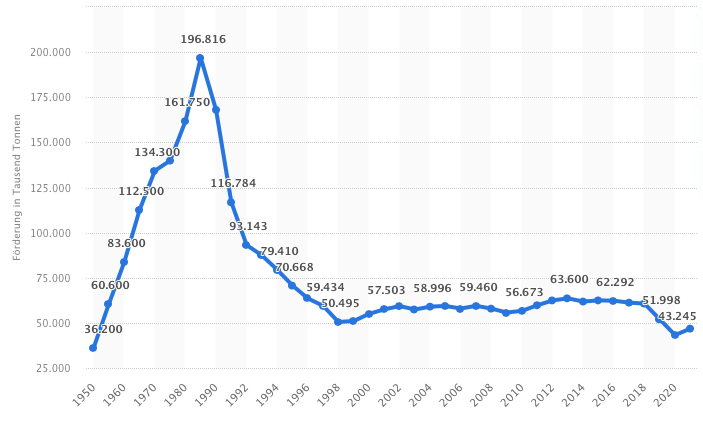
In 2019, following the general European trend towards decarbonisation, the German Federal Government passed a coal phase-out bill which established the termination of industrial coal mining by 2038 and simultaneously launched a nationwide competitive development programme of €40 billion to aid coal regions with the structural transformation of their economies. In Lusatia, the relatively fresh memories of the ruptures of postsocialist transition triggered fears of another phase of unemployment and outmigration. During the past three years, mayors, companies, and citizens alike have therefore undertaken considerable efforts to draw up local development plans and future projects, attract new industries, and seek out new business fields for the time after coal to prevent the further ‘exsanguination’ (Ausbluten) of the region.
The Russian invasion of Ukraine, however, posed a major disruption to these transformation activities. Following the termination of coal imports from Russia, the reduction of gas transmissions through the Nordstream 1 pipeline, and the halting of the Nordstream 2 project, German national mining output is currently being increased again and already decommissioned power stations are being reactivated to secure the energy supply for the coming months. Following a reactivation bill passed in June 2022, Baden-Württemberg is reactivating 9 oil- and coal-fired power station units; 2 power stations have been reactivated in Nordrhein-Westfalen, with 3 more being decommissioned later than planned; and in the Lusatian mining district, 2 units of the largest power station have been reconnected to the grid. One of my interlocutors reported that retired employees have been asked to return to work to manage the unexpected reactivation, while his own number of shifts has almost doubled in recent weeks. The present historical moment is thus marked by a complex interplay of ongoing resource extractivism, incipient efforts to replace coal mining with renewable energy generation, memories and persistent repercussions of postsocialist deindustrialisation, and the unexpected ruptures and uncertainties posed by the current geopolitical tensions with Russia.
Miloraz: a village at the frontier of extractivism
Situated in the midst of these conflicting trajectories is a small village of about 180 inhabitants called Miloraz. It sits quietly at the end of a small country road amidst forests and fields, and it is the last settlement before one of the remaining 3 opencast lignite mine begins. Miloraz has a pub, a deer park, a swimming pool, a sports court, a church with an external bell tower, a cemetery, a fire station, and a house of culture, and is composed of the picturesque old brick-walled four-sided farm buildings typical of Lusatian agricultural settlements.
Before the Russian invasion of Ukraine called into question Germany’s energy transition plans, Miloraz was going to make history as the last East German village to be resettled in the local history of coal mining. In Lusatia, a total of 137 settlements – home to 80,000 people – have been ‘swallowed’ by the expansion of 31 opencast mines (see Fig 2).
Lignite frontiers expand gradually over time. In Eastern Germany, the transformation of places into operational landscapes for the mining industry has typically taken between 30-60 years to complete. The mine next to Miloraz, for instance, was opened in 1968 with the first tonnes of coal delivered to the nearby power station in 1973, yet – although residents lived for five decades with the uneasy feeling that one day the frontier might reach the village – a binding resettlement agreement between the mining company and the local mayor was only signed in 2019.
Crucially, this extended timeframe of reconfiguration produces a profound sense of disorder and uprooting among those affected by it long before resettlement actually takes place. Over the course of decades, residents at the frontier of extractivism are subjected to four overlapping processes of reconfiguration: spatial restructuring, social disintegration, material perforation and, ultimately, dispersal. As we will see, although not related to the radical change of a political order (such as with the fall of socialism) but rather to the regular rhythms of the extractivist economy, the lived experience of mining-induced displacement resonates in many ways with emptiness as a social formation.
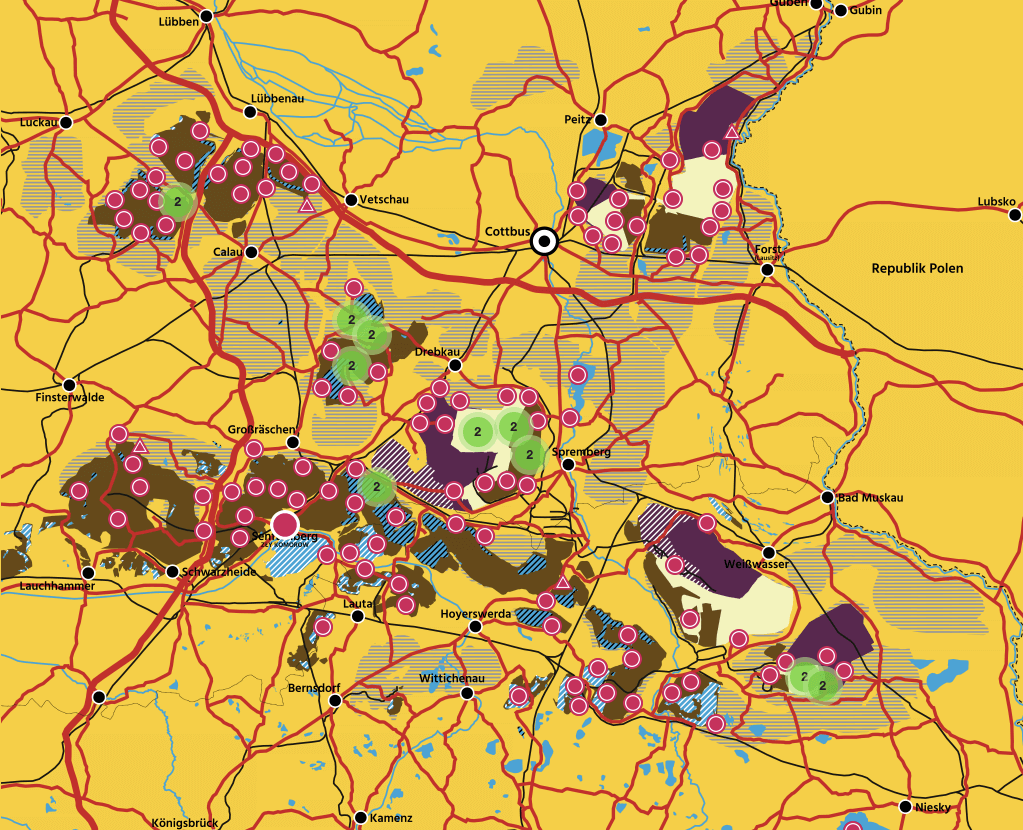
Radical reconfigurations under extractivism
I first came to Miloraz in August 2019. I remember that I noticed straightaway how unusually silent it was. Miloraz didn’t look empty in the sense of having abandoned or dilapidated houses, yet something about it felt utterly uncanny. Instead of any noises of village life, I could only hear the humming of white jeeps passing by every 10 minutes or so – these were the patrol and staff cars of the mining company, as I later found out. At that time, the resettlement contract had just been signed after 50 years of uncertainty, but no relocations had taken place yet.
From conversations with mining employees, I learned that the spatial restructurings necessary to prepare sites for lignite extraction unfolds in three stages. In the clearing phase, fields, forests, and settlements are turned into mineable ground with the help of chain saws, bulldozers, and groundwater pumps. Subsequently, excavators and conveyor bridges transform the site into a vast hole from which coal can be extracted. Finally, the ‘black gold’ is transported from the bottom of the mine via conveyor belts, train tracks, and trucks to the nearest power plant where it is burned and converted into electricity for use by private and corporate consumers.
As the frontiers of mines advance gradually over the course of four to eight decades, nearby settlements are confronted with the side effects of mining activities long before their actual expulsion from the designated ‘mining territory’ (Bergbaugelände) takes place. Once the area is classified as mining territory, fences, barriers, and no trespassing signs appear, and residents are subjected to the omnipresence of corporate patrols. These are experienced as emphatic symbols of the power dynamics of extractivism wherein extraction rights trump private property rights and ‘rooted’ feelings of belonging. This reordering of space is further amplified by a cacophony of rattling and beeping machines, humming jeeps, and roaring chain saws combined with coal dust on windows and surfaces and drought effects on fields and gardens due to lowered groundwater. These side effects produce a new affective environment wherein the traces of destruction penetrate everyday life as a constant reminder of the expulsion to come, even though the moment of actual resettlement might lie decades in the future.
Locals refer to this process as the mine’s encroachment (Vorrücken). And with the encroaching spatial frontier, the prospect of expulsion slowly also begins to weigh on the here-and-now, even though the moment of actual resettlement might lie far in the future. Residents remember fields that they and their ancestors used to cultivate, forests where they walked their dogs, went hunting, picked mushrooms, or obtained firewood, bike paths they used to cycle on to visit friends. As the mine expands, the landscape slowly becomes unrecognisable, it can no longer be traversed and inhabited in the familiar ways, it is strictly guarded and no longer feels like their home (Heimat) – a sign that place is turning into space. So while for mining agents the opencast mine constitutes a highly productive void from which value is extracted and transferred elsewhere for conversion and accumulation, for those who inhabited the landscape preceding it this void is a vast and empty hole which slowly eats up feelings of home and belonging.
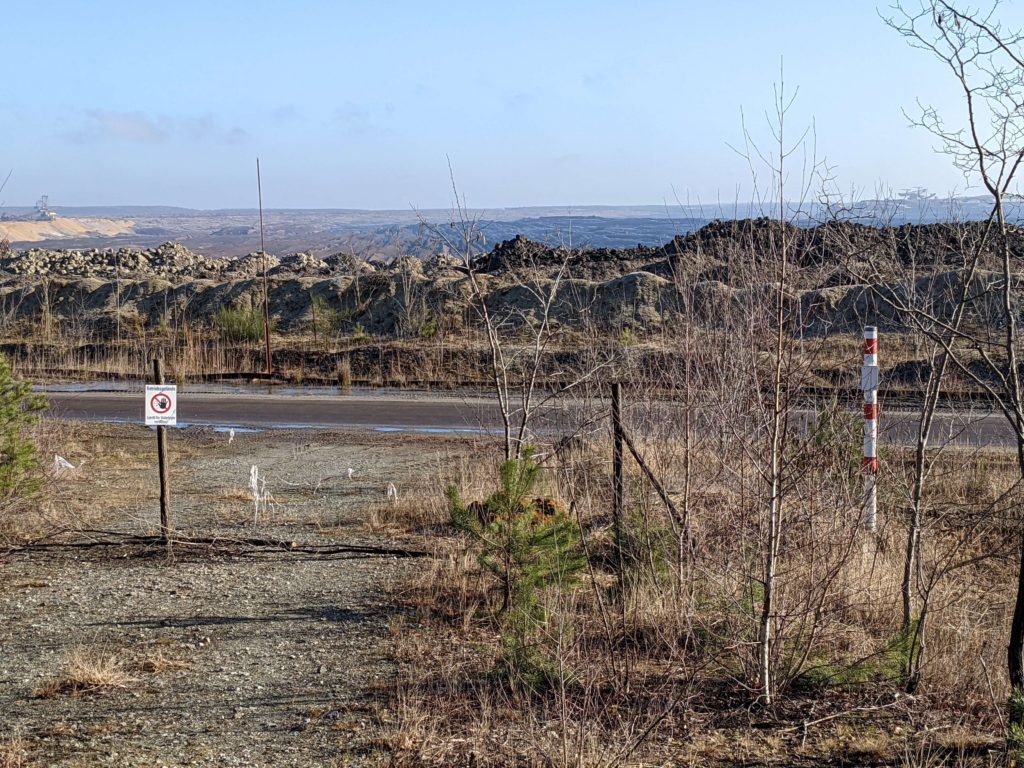
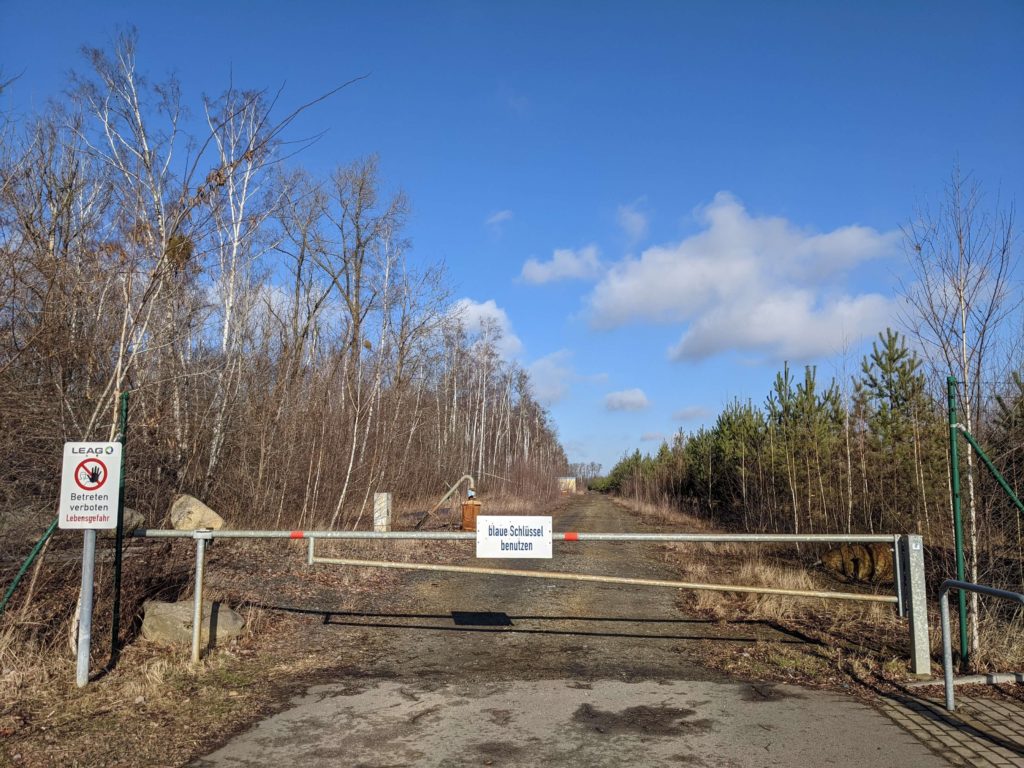
Once the clearing phase nears its end, not only the surrounding landscape but also private property gradually changes ownership. The spatial effects of ‘encroachment’ begin to penetrate into the fabric of the village itself. Coal companies are required by law to purchase houses and premises via resettlement contracts from individual residents. As some house owners cooperate and others resist negotiations, fierce conflicts arise between those willing to resettle and those who oppose it. Residents then tend to reduce or even cap social relations with the respective others altogether, and village life turns sour. Clubs fall apart, friendships and family bonds break up. Many isolate themselves and turn inward. As time passes, the once lively and tight-knit village community transforms into a loose assemblage of estranged individuals, leading to the fragmentation of the social fabric which previously constituted the place alongside the transfer of buildings of properties into the hands of the mining company. People talk about this process in terms of ‘decomposition’ (Zerrüttung) and ‘undermining’ (Zersetzung). It is a peculiar form of social disintegration wherein the village disintegrates long before it actually disappears. In Miloraz, these types of conflicts began to surge after 2007 when concrete resettlement plans first became publicly known, the starting point of a more than 14-year-long process of social undoing.

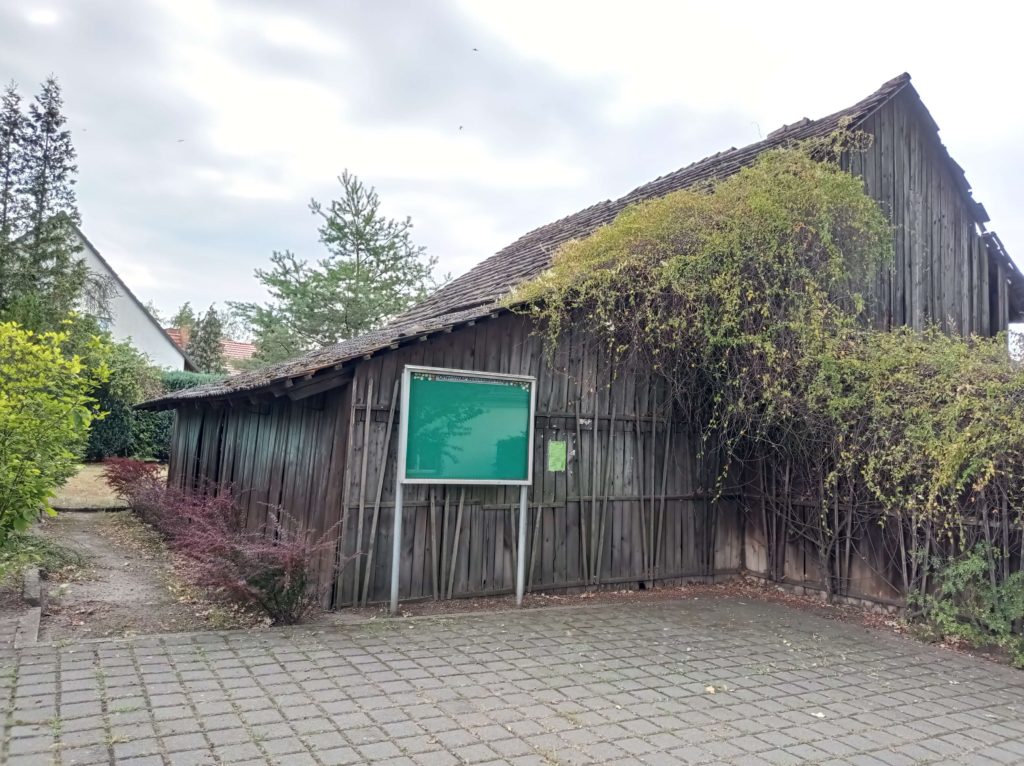
Once houses and premises are sold to the mining company, residents have to abandon them within a given timeframe. One after another, they leave behind empty houses which are subsequently demolished one at a time. When I returned to Miloraz in April 2022 to see how far its strategic emptying had progressed, the local pub which had just closed in 2019 when I first visited had been razed to the ground. Along with it, I identified 7 other houses that must have been bulldozed since August 2020 when the mining company began its work of ‘unbuilding’ (rückbauen) the village. Two houses were currently subjected to the bulldozer as far as I could identify before the coal company’s security guards told me to leave the village.
For those residents who are left, watching the brutality of intact and recently inhabited houses being destroyed and imagining that the same will happen to their own house is painful and disturbing. As more and more houses disappear, the village-scape becomes perforated with ever more gaping material voids. Now, the telos of complete disappearance finally becomes palpable. Yet, even in this phase, a handful of resisters still try to make everyday life go on in the midst of the destruction. These tend to be older residents who have lived on their farms their whole life, just like the generations before them, and whose children say they would not survive the relocation. They continue to cling to the futile hope of buying time and being spared after all, hoping for sudden changes in mining plans or the emergence of political support through media attention. Some team up with activists of the associations Alle Dörfer bleiben (‘All villages remain’) or Ende Gelände (‘This is the end’), but protest actions are few and remain symbolic. Generally, resistance has rarely been successful once relocations have gathered pace. Only in 1989, a few villages that were already in the process of being resettled were saved by the abrupt end of socialism and the ensuing economic restructurings which led to the sudden closure of 8 opencast mines.
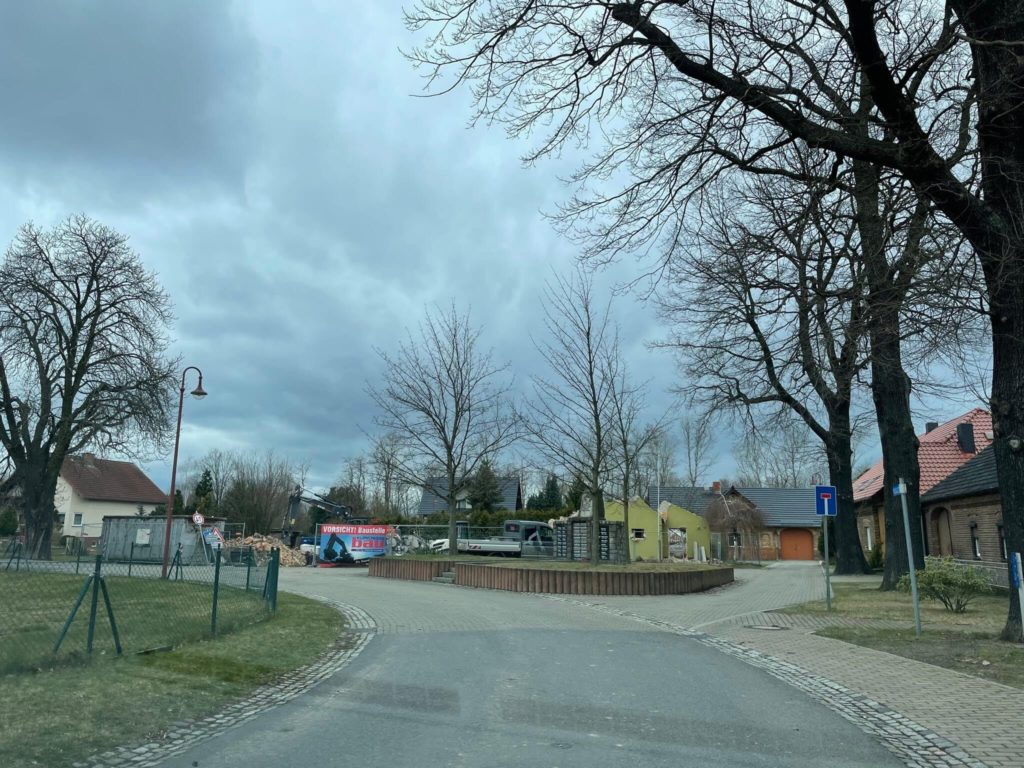
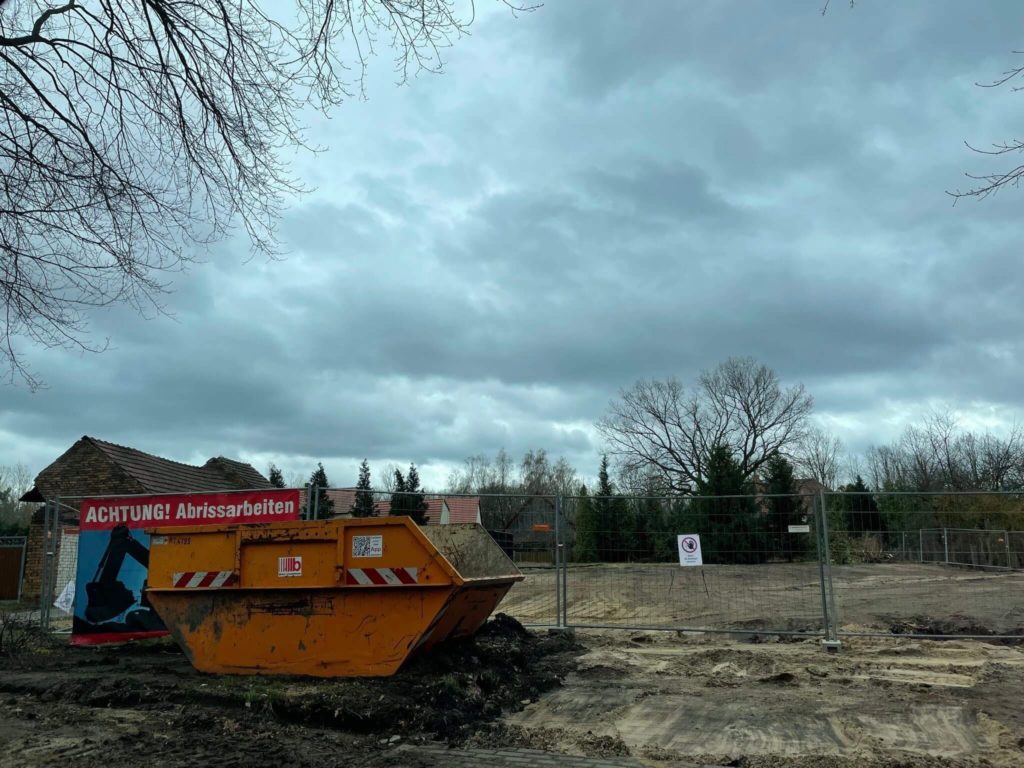
In the final phase of disassembling, emptiness attains an increasingly literal meaning. The ground underneath the demolished houses is flattened until there is nothing left but an assemblage of sandy patches which become striking metaphors for the near-complete erasure of ties between people, things, and place. These elements, to be sure, all have a future, but not together (Dzenovska 2020): the rubble of the houses will continue life as waste and recycling material, the land will metamorphose into ‘excess soil’ (Abraum) later to be used for refilling the pit, and the former residents start new lives as individuals in other locations. Those who still try to resist at this stage are forcefully expelled. For Miloraz, this process of ultimate dispersal is planned to be concluded by 2024. For many, however, the existential emptiness produced by the radical reconfiguration of these relations is likely to stay, even if they try to assemble a new sense of place with other components elsewhere. After the completed transformation of the village into a site for extracting coal, it will be taken off the map. What remains is an entry in the Lusatian Archive of Vanished Villages and a village gravestone marking the necessary sacrifice.

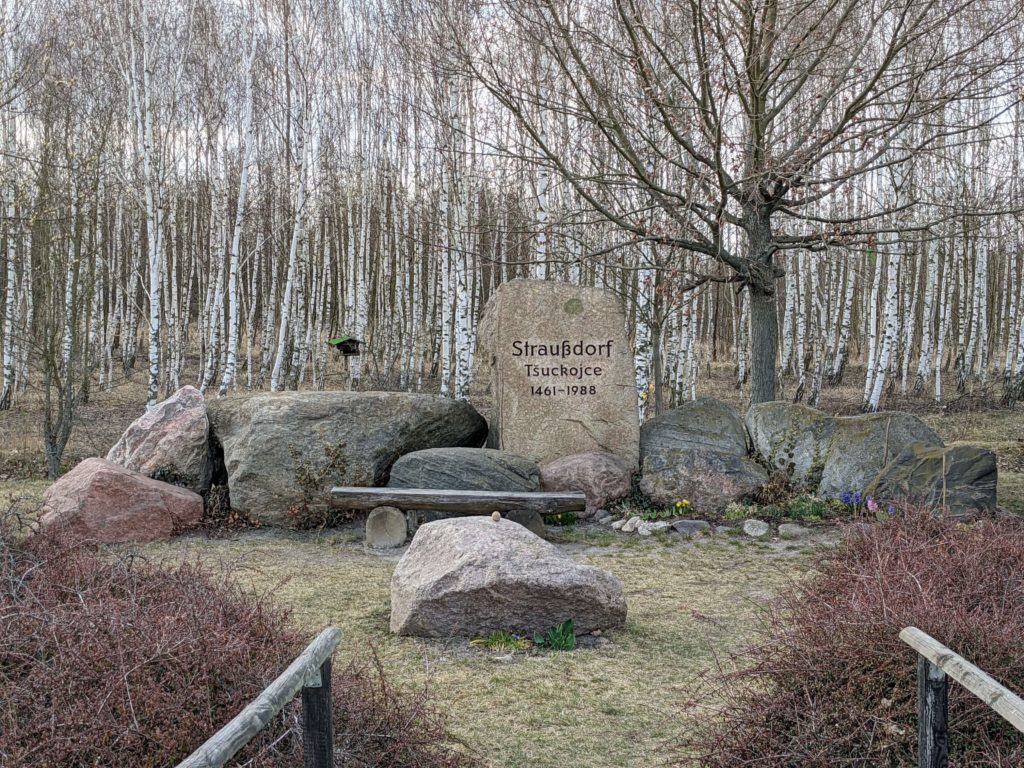
Extended extractivism
The production of operational landscapes for lignite mining requires the rearrangement of materiality, property relations, value, and people. In this process of extractivist respatialisation, strategic emptying plays a key role. It takes the form of expulsion for accumulation through extraction, which coal representatives tend to characterise as a ‘necessary sacrifice for the greater good’; that is, the enjoyment of electricity and heating for all, including the expelled. While the practice of forceful expulsion for extraction arguably falls under the logic of ‘creative destruction’ (Schumpeter 1976, Harvey 2007), the lived experience of extended extractivism as revealed through careful ethnographic observation is a more complex configuration. Representatives of the mining company say that ‘people who live here and grow up with the mine know that it will be their turn one day’, an assertion which would close the timespace to the form of radical openness which characterises Dace Dzenovska’s emptiness as a social formation. However, the temporal extensiveness of the timespace of reconfiguration allows residents to live with the future of expulsion as a possibility rather than a certainty, even if the spatial-material evidence around them strongly suggests otherwise. The wide temporal horizon is what lends hope for changes in mining plans or political climate traction; the clinging onto a constructed or hoped-for uncertainty is what makes life on the frontier go on despite the encroachment of a telos that points towards the community’s dispersal and the village’s disappearance.
So, while in theory, the reconfiguration of lives at the frontier of extractivism is not as radically open as Dace Dzenovska’s concept of emptiness implies, it exhibits elements of radical openness in its effects on affected residents. For decades, people have only a vague idea of the possibility of the prospect of expulsion and tend to lose sight of the future to come. This experienced openness is produced both by the long duration of the emptying process and by people’s deliberate coping tactics of denying that factuality of the future of expulsion and treating it instead as a possibility that might be altered through resistance or changes in mining plans. The extended temporality and constructed uncertainty of extractivism thus produces a timespace and affective condition that resembles the kind of emptiness which emerges in places expelled from circuits of capital where the future is marked by actual radical openness.